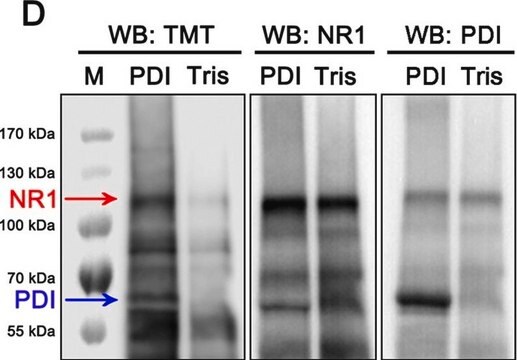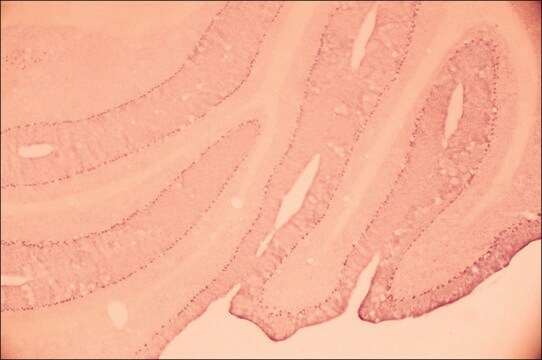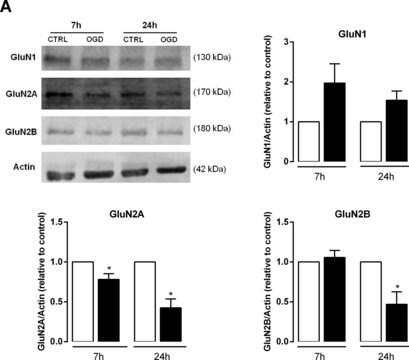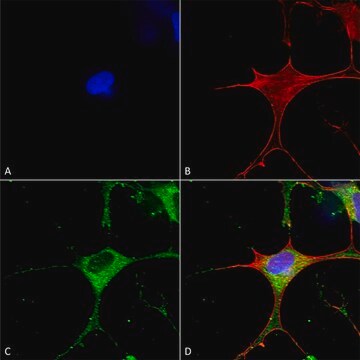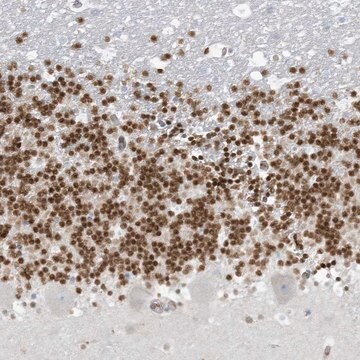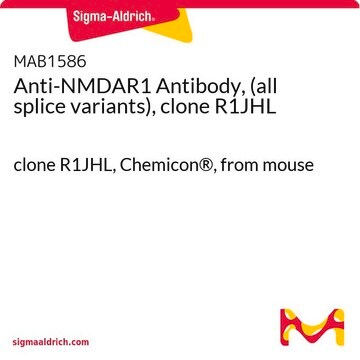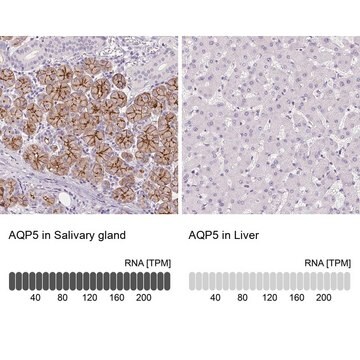AB9864R
Anti-NMDAR1 Antibody, clone 1.17.2.6, rabbit monoclonal
clone 1.17.2.6, from rabbit, unconjugated
Synonym(s):
N-methyl-D-aspartate receptor channel, subunit zeta-1, N-methyl-D-aspartate receptor subunit NR1, NMDA receptor 1, glutamate [NMDA] receptor subunit zeta 1, glutamate receptor, ionotropic, N-methyl D-aspartate 1
Select a Size
Select a Size
About This Item
Recommended Products
biological source
rabbit
Quality Level
conjugate
unconjugated
antibody form
purified immunoglobulin
antibody product type
primary antibodies
clone
1.17.2.6, monoclonal
species reactivity
rat, mouse
species reactivity (predicted by homology)
human (based on 100% sequence homology)
technique(s)
immunohistochemistry: suitable
western blot: suitable
isotype
IgG
General description
Immunogen
Application
Neuroscience
Neurotransmitters & Receptors
Immunohistochemistry Analysis: 1:250 dilution of this antibody from a previous lot detected NMDAR1 in rat cerebellum tissue.
Quality
Western Blot Analysis: 0.1 µg/mL of this antibody detected NMDAR1 on 10 µg of rat brain tissue lysate.
Target description
Physical form
Storage and Stability
Handling Recommendations: Upon receipt and prior to removing the cap, centrifuge the vial and gently mix the solution. Aliquot into microcentrifuge tubes and store at -20°C. Avoid repeated freeze/thaw cycles, which may damage IgG and affect product performance.
Note: Variability in freezer temperatures below -20°C may cause glycerol containing solutions to become frozen during storage.
Analysis Note
Rat brain tissue lysate
Other Notes
Disclaimer
Not finding the right product?
Try our Product Selector Tool.
Storage Class Code
12 - Non Combustible Liquids
WGK
WGK 1
Flash Point(F)
Not applicable
Flash Point(C)
Not applicable
Certificates of Analysis (COA)
Search for Certificates of Analysis (COA) by entering the products Lot/Batch Number. Lot and Batch Numbers can be found on a product’s label following the words ‘Lot’ or ‘Batch’.
Already Own This Product?
Find documentation for the products that you have recently purchased in the Document Library.
Our team of scientists has experience in all areas of research including Life Science, Material Science, Chemical Synthesis, Chromatography, Analytical and many others.
Contact Technical Service